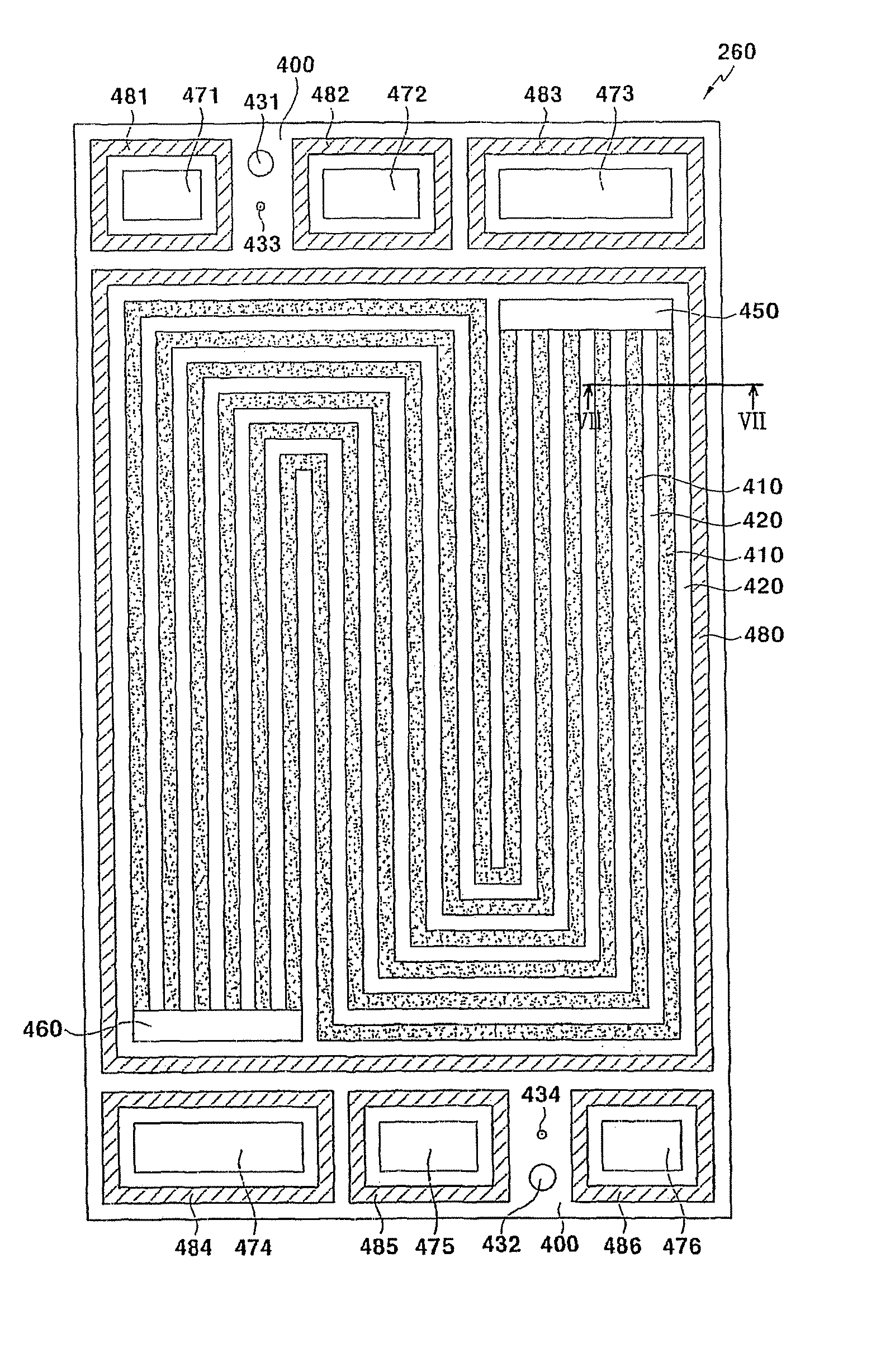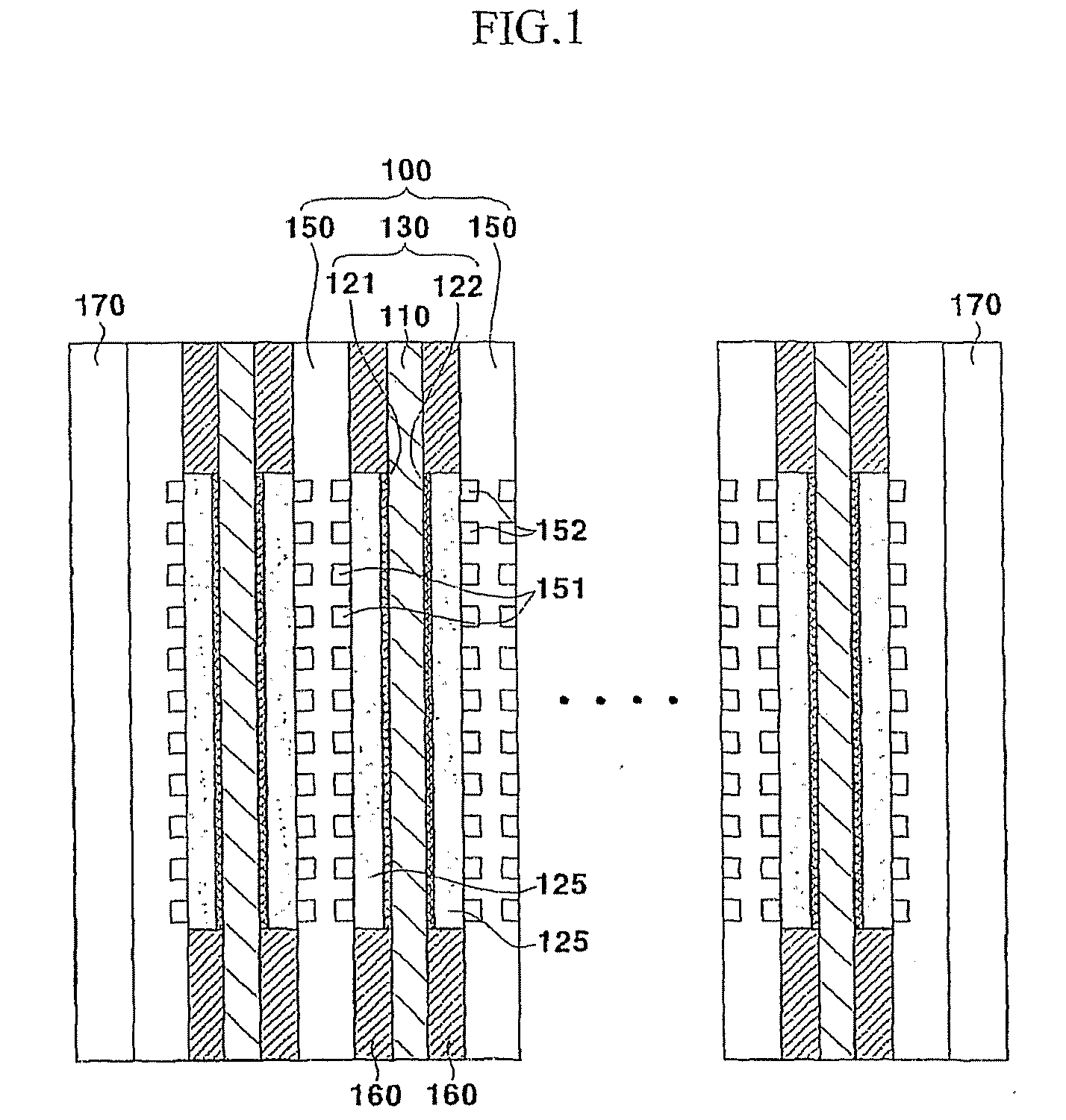Separator for fuel cell, manufacturing method thereof, and fuel cell having such a separator
- Summary
- Abstract
- Description
- Claims
- Application Information
AI Technical Summary
Benefits of technology
Problems solved by technology
Method used
Image
Examples
second embodiment
[0182] Hereinafter, the present invention related to the case that the graphite foil used for the separator includes a stainless steel layer therein is described with reference to FIG. 11.
[0183]FIG. 11 is a sectional view of FIG. 6 along a line XI-XI according to a second embodiment of the present invention.
[0184] As shown in FIG. 11, a lamellar structure graphite foil 1140 used for a separator 1150 according to a second embodiment of the present invention includes a stainless steel layer 1160 therein.
[0185] Such graphite foil 1140 including the stainless steel layer 1160 may be easily manufactured e.g., by pressing graphite layers of predetermined thickness to front and rear of the stainless steel layer 1160.
[0186] The stainless steel layer 1160 may be of, e.g., SUS304 or SUS316, and its thickness t is preferably 0.1 mm to 0.3 mm. The thickness d3 of the graphite layers formed at front and rear sides of the stainless steel layer 1160 is preferably more than 0.2 mm considering th...
first embodiment
[0188] A method for manufacturing the separator 1150 using the graphite foil 1140 including the stainless steel layer 1160 therein is the same as a method for manufacturing the separators 250 and 260 according to the present invention that has been described with reference to FIG. 10.
[0189] In the process of dry-etching for forming the flow-field channels 610, the graphite layer is etched such that the stainless steel layer 1160 is exposed. As for the process of dry-etching (e.g., the above-described sand blasting etching process), the stainless steel layer 1160 has a substantially smaller etch rate than the graphite layers formed to front and rear of the stainless steel layer 1160. Therefore, such stainless steel layer 1160 functions as an etch stop in the process of etching.
[0190] According to such a feature, the manufacturing process of a separator becomes easier, and a manufacturing device of lower precision may be used to produce a separator with equally high performance and p...
PUM
 Login to View More
Login to View More Abstract
Description
Claims
Application Information
 Login to View More
Login to View More - R&D
- Intellectual Property
- Life Sciences
- Materials
- Tech Scout
- Unparalleled Data Quality
- Higher Quality Content
- 60% Fewer Hallucinations
Browse by: Latest US Patents, China's latest patents, Technical Efficacy Thesaurus, Application Domain, Technology Topic, Popular Technical Reports.
© 2025 PatSnap. All rights reserved.Legal|Privacy policy|Modern Slavery Act Transparency Statement|Sitemap|About US| Contact US: help@patsnap.com



